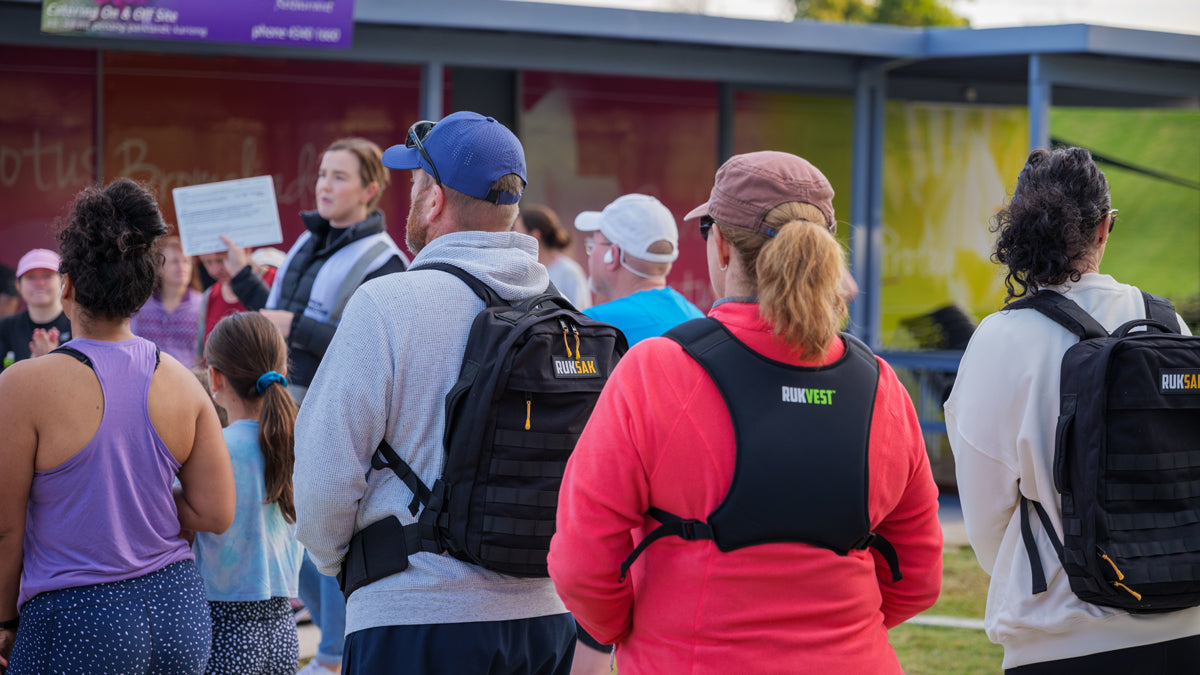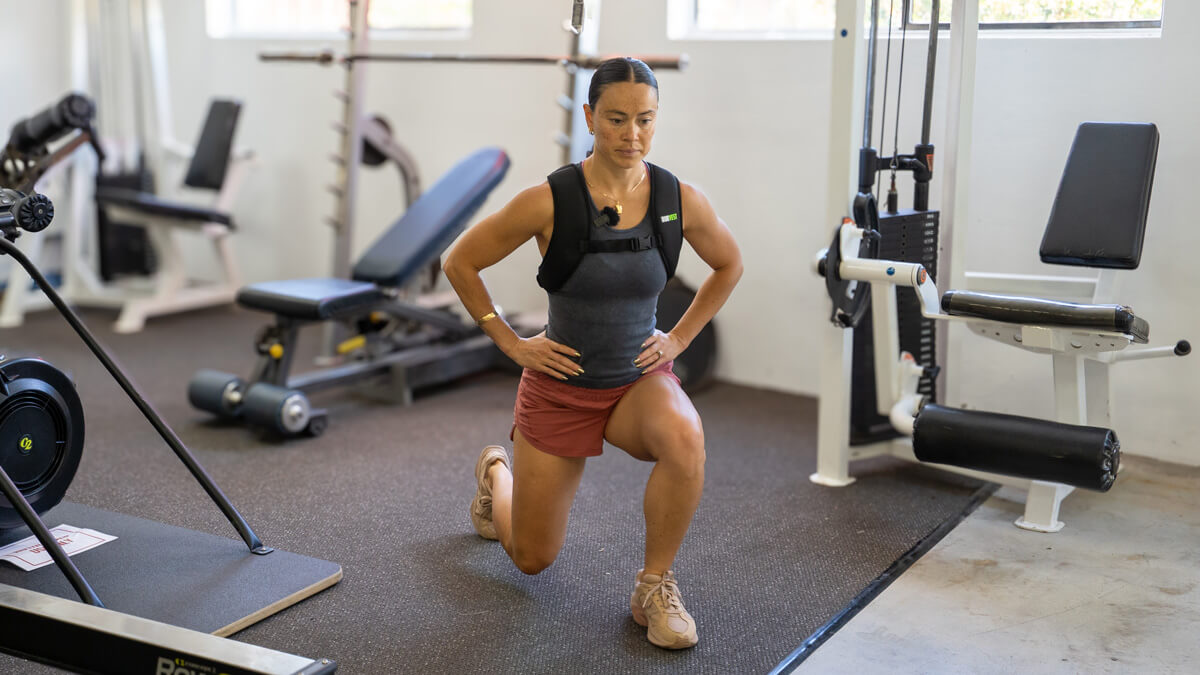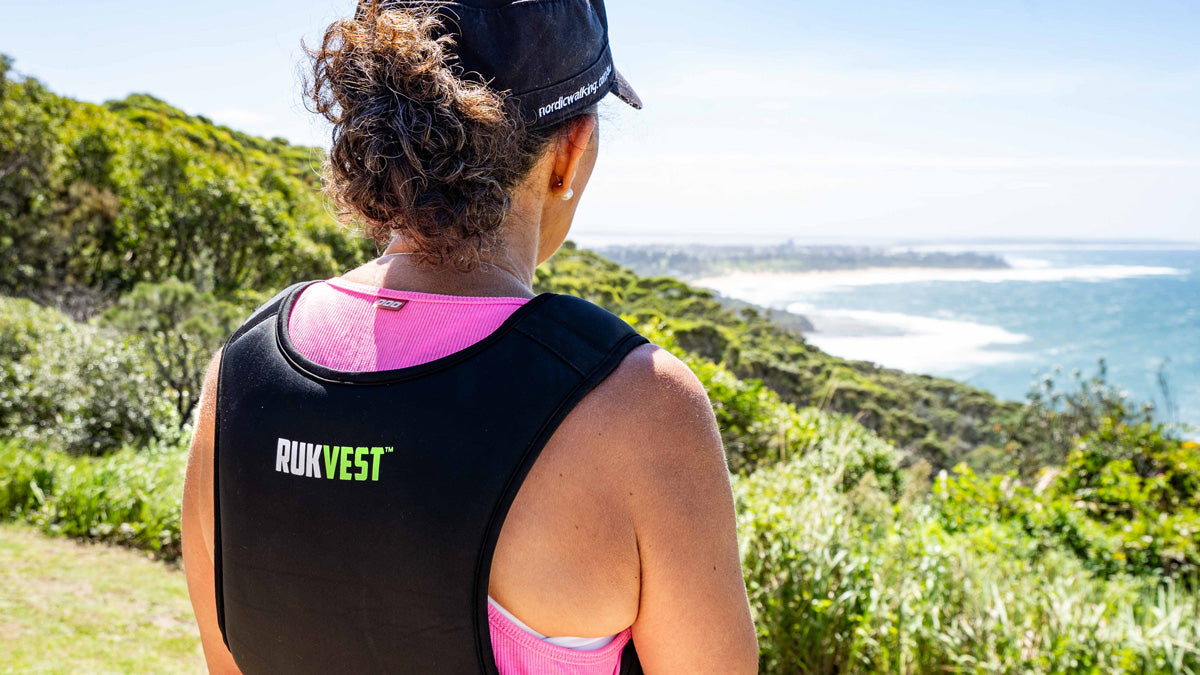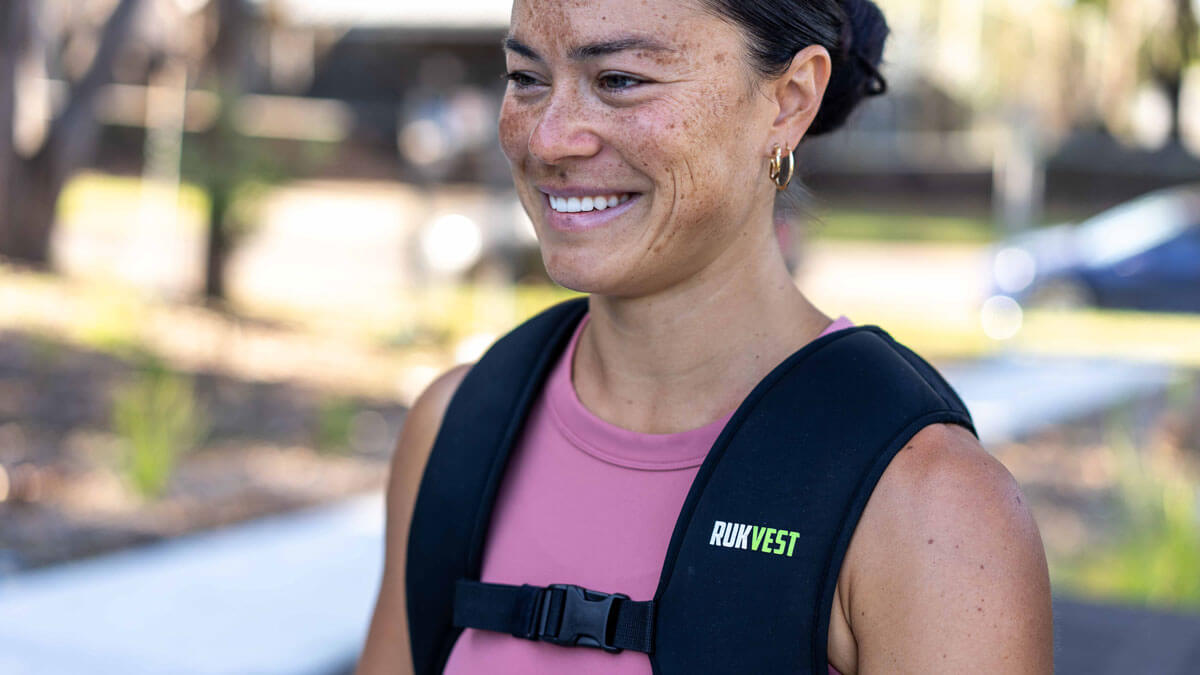Some of the longest (and hardest) organised walking events are those that are attached to charity fundraising events.
So yes, you will have a loads of feel good moments as you support a great cause, but the good feelings will fade super quickly at the event if you sleep on the training for it.
To help you best prepare for the endurance, the joint pain, the fatigue (still want to do one?) we have created a training program using a rucksack or weighted vest to best prepare you for the fun that lies ahead.
Key Takeaways
- Charity walks can be physically demanding—rucking helps prepare your body and mind for endurance events.
- Rucking strengthens legs, core, and stabilisers while improving cardiovascular fitness and joint resilience.
- An 8-week training plan gradually increases distance and weight, building stamina and confidence.
- Start light, focus on form, and introduce hills in later weeks for real-world conditioning.
- Choose quality gear like the RUKSAK or RUKVEST, recover well, and taper before event day.
- Simulating event conditions in training ensures you finish strong and enjoy the experience.

But first, a quick rundown on all things rucking …
Rucking is walking with a weighted backpack.
And it is a game-changer for training, particularly for a long walking event.
It strengthens the muscles you need stronger by engaging leg, core, and stabilisers muscles and thus reducing the risk of fatigue and injury during the event.
Boosts your aerobic endurance and stamina, by working your heart a little harder, walking with weight improves cardiovascular fitness and prepares you for walking long distances.
Prepares your soft tissues and joints for what's coming as it simulates the real-world challenges of long-distance walking making knees and ankles more resilient.
Helps build mental toughness which you may need to call on when the discomfort starts sets in.
Helps better represent the actual walking conditions by emulating some hills while carrying essentials, rucking prepares you for all these challenges.
Whether you're preparing for a 10k community walk or a multi-day hike, adding rucking to your training will help you cross the finish line feeling strong and willing to consider doing it again at some point.
So here is how you best incorporate rucking into your event training plan.

8 Week Charity Walk Training Plan
Week 1
Ruck around 3-5kms in total wearing 3-5 of your body weight.
Focus on getting used to the sensation of carrying weight.
Week 2
Ensure you hit 5kms with 5% of your body weight.
This week is working on form and posture.
Week 3
Ruck around 6-8kms wearing 6-8% of your body weight.
While gradually loading focus on breath and mobility after rucking.
Week 4
Ruck 8kms wearing 8% of your body weight.
This is where things get real and real gains are made.
Week 5
Ruck 9-10kms in total wearing 9-10% of body weight.
Despite carrying heavier, things will start to feel easier.
Week 6
Ruck 10kms with 10% of your body weight.
Focus on form and maintaining a steady pace.
Week 7
Start introducing hills and mixed terrain.
Tougher terrain will benefit you more than increased pack weight.
Week 8
Go as long as you can as often as you can with as heavy as you can.
This one is a mental challenge and the last bit of work before the event.
This 8 week plan will have you ready to take on any walk you choose to sign up to.
Plus you will feel like a healthier human.

Tips to get the most out of your training
But there are some tips to consider to get the most out of the training.
- Start light & progress in weight and distance gradually.
- Focus on good posture ensuring shoulders are back, core is engaged, and your stride the same as normal.
- Choose the Right Gear, we can help you here with a RUKSAK or RUKVEST, but also be mindful of wearing comfortable clothing and footwear that suits the terrain you are walking on.
- Prioritise Recovery by staying hydrated and stretching regularly before and after rucking.
- Taper off your training program by reducing the weight and distance in the final week before the event.
- Simulate your event plan by training with the same gear, same hydration and same nutrition you plan to use on event day.
This training program has seen success with many RUKSAK users adopting it for training for long charity walks.
“I trained for The Bloody Long Walk by rucking twice a week. I built up from 5km to 10km with my RUKSAK and on event day, I felt stronger than ever, and the hills didn’t phase me anywhere near where I thought they would."
Lisa








Share:
Perimenopause & Rucking: Weighted Vest Walking Guide
RUKVEST at ‘So Hot Right Now’: A Huge Hit at the Sydney Opera House!